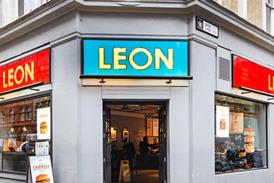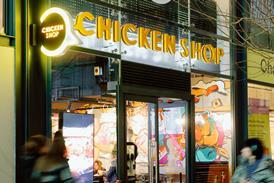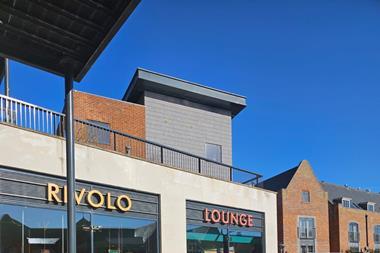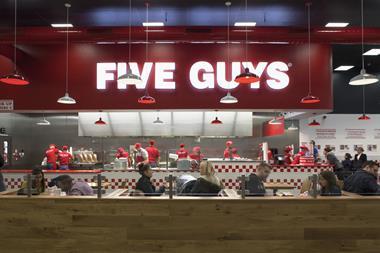Almost universally, operators hold the view that increasing property costs are presenting an enormous challenge to the restaurant and licensed property sectors in the UK. The market is hot – we all know that. The question is, are the costs sustainable, do they present a real danger to the sector, and if so, where? Davis Coffer Lyons’ Trevor Watson reflects on the issues
Rents
Most operators I talk to seem to believe that rents are set by greedy landlords who are imposing an unrealistic burden on the poor, hard-working entrepreneurial operator. This is, of course, a myth.
Without operators willing to sign leases at a certain level of rent, properties will remain vacant. It is the willing tenant that effectively sets the rent. Equally, it is a myth to suggest that rents only go up.
Rents don’t only just go up. Simply look at the fall in nightclub rents since the crash of 2008 to see how market rents respond to market conditions. When rents rise it is only due to operator demand exceeding site supply. No willing tenant = no rent.
Escalation in London
Central London has seen a rapid escalation in rents during recent years. This is due to supply constraints and a major influx of independent emerging operators – UK and overseas-based. The rental tones are being set not by established UK corporate restaurant operators but by the innovators.
Some of these young, emerging companies have strong concepts and operating styles, and can comfortably pay the agreed rents and still generate substantial returns for their owners and investors. This is, however, certainly not universally the case and some operators sign up to rental obligations that their businesses are unable to meet. In these cases, the rents they have agreed can prove to be a burden. The nature of the central London market, however, is that there is almost always another operator lining up to take the site.
While the cost of a fit out is potentially a risk for such operators, a high rent will not necessarily preclude a successful assignment; although it is likely to reduce any premium received. The nature of the London market is 24/7 full-on. Although some may suggest that rental levels might prove to be an unsustainable crippling burden, I do not see any evidence of this as yet.
Corporate operators are choosing to divert their attention elsewhere in the UK because their brands will often have
greater leverage away from fashionable central London districts and, as a consequence, return on investment away from London is more attractive to them.
South-east and home counties
Affluent home county towns throughout the likes of Surrey, Berkshire, Buckinghamshire, and even beyond, such as Hampshire, have seen nothing short of an explosion of casual-dining facilities in the past five years. Such towns generally have strong demographic profiles. Branded operators see these markets as preferable to central London partly because of lower property costs in the commuter belt.
However, I am somewhat concerned as to the sheer volume of openings in most of these towns. There is a tendency for trade in these areas to be split too thinly in many of these locations.
As a result, many operators are now re-focusing – this time on second tier, smaller market towns, not only in the south-east but throughout the UK. Property costs are that bit lower, as is the quantity and quality of competition. Market towns can generally only support one or two branded operators and, as such, the likelihood of additional competition coming in is also reduced.
Many operators have concluded that their growth strategy must be built around market-town expansion rather than city-centre and large town-centre locations.
Premiums
I have heard it said many times that a premium is just a payment to buy someone else’s failed business, so why pay one? While this can be part of it – it certainly isn’t the whole story. In a market where good-quality sites are in short supply, if your business model and forecasts can sustain the payment of an initial premium, why wouldn’t you pay one to get the best possible site? Five Guys is well known for having paid large premiums for key sites; nobody could ever suggest these payments didn’t make sense given its payback period and the quality of the estate it is building.
Rent review process
Rapidly rising rents, as well as premiums, can put severe pressure on some operators at rent review – of that there is no doubt. The rent review process, albeit not perfect, is, in my view, reasonably effective. If you are unhappy that a recent letting of a neighbouring property will create high comparable evidence (or indeed payment of a large premium), the best way to meet this challenge is to ensure that you deploy the best possible expert advice to represent you. There may well be good reasons why the comparable is worth a lot more than your property. Equally as important is to ensure that you have an arbitrator or third-party expert who has the necessary expertise and market involvement in order to discern between rogue evidence and market tone to ensure that comparable transactions are given the appropriate weight.
Rates revaluation
During the next few years, the industry will face the challenge of a rating revaluation. You do not need a crystal ball to know that this will lead to an increased rates burden for occupiers in the south-east as against most other parts of the country. The impact of this could well serve to put the brakes on rental growth trends in some areas as total property costs rise as a result.
Hot markets and risks
For the minute, economic conditions are, generally, benign. However, in the event of a significant jolt to the economy, it seems to me that the market that looks potentially most vulnerable at present is the affluent home counties towns, which are showing a high degree of saturation. Trade is already split thinly and any decline in consumer confidence will lead to reduced sales and even weaker profit conversion. Some sites could well start to look unfeasible quite quickly. Certainly, premium values in
these locations would come under pres-sure very swiftly. Overly rapid expansion by the casual-dining sector in these areas could well lead to many of these locations becoming clone towns, which might result in consumer fatigue.
Indeed, the trading figures in our Coffer Peach Business Tracker tell us that while total sales growth in the sector is currently at 5.5% for the past 12 months from the end of September 2015, this is largely due to the rapid rate of new site openings. Like-for-like sales are growing at a much more modest 1.3% – about half the rate of this time last year. There is certainly no explosion in consumer spending.
The central London market, of course, is always different. All-day trade, the combination of tourist, resident and business activity sustains many operations. The sheer shortage of quality sites will normally underpin trading performance and rent and property values.
The central London market is, however, certainly not immune to a downturn, but history does suggest it tends to show a more rapid recovery than other areas. As such it is probably in a better place to withstand any hiccup in the economy.
Other provincial cities have seen rapid development of their food service industry in recent years. Manchester, Birmingham, Leeds and Liverpool to name just a small selection now boast a high-quality range of eating establishments in all sectors. Again, these markets appear to be in significant growth at present but could prove to be vulnerable in the event of any unforeseen downturn. Although patterns of trade in these cities mirror those in London more now than ever before.
Conclusions
The market is more dynamic now than at any time in my 25 years specialising in this sector. Although operators will always complain at the lack of suitable opportunities to grow their businesses, you only need to look around at some of the faster growing emerging brands both in London and nationwide – Five Guys, Loungers, Côte, etc – to see that sites are available.
However, the discipline of rapidly rising rents and property costs is something that all operators need to keep carefully in mind. Rapid over-expansion into inferior sites in locations with excessive competition has certainly been a major issue for many restaurant and bar operators in the past and, no doubt, will be so for some in the future.
■ Trevor Watson is executive director of valuations at leisure property advisor Davis Coffer Lyons




































